Sentinels of the Sea: Fossil corals help predict severity of global warming
October 30, 2006
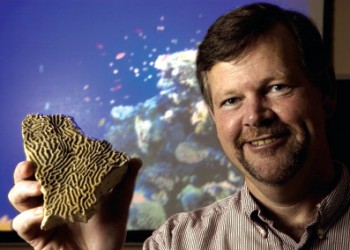
Terry Quinn searches for just the right kinds of coral. “We look for big Volkswagen-sized corals,” he said. “Branching corals and big sea fans are pretty to look at, but they aren’t necessarily good for climate records. So we look for big ugly ones.”
To be precise, he looks for a type of stony coral called Porites, which go by the common names of lobe or mound coral. They look like big round bales of hay covered in purple, green or tan fuzz. To Quinn, these are also archives of Earth’s past climate. They tell of a time before scientists and naturalists and explorers had the instruments to accurately measure and record the world around them.
Earth’s climate is changing. Climate scientists agree on that much. But they argue about how much and how fast. Climate models that are used to predict future climate vary widely in their forecasts. For example, some predict Earth will warm by 3 degrees Fahrenheit by the end of the century, others put the number closer to 12 degrees. The models are based on fundamental physics of the ocean-atmosphere system, but also require simplifications and assumptions to be made, the choices of which vary between models.
Quinn hopes to help by providing better input for the models from his coral studies. Corals grow by adding new layers on the outside, like the trunk of a tree. And like trees, they have annual growth bands that record information about what that year was like. “So we can tell the modelers, ‘Okay, 20,000 years ago, the temperature and salinity of the oceans were like this, El Nino was this active, and so on,’ and that places constraints on the inputs to the climate models,” said Quinn.
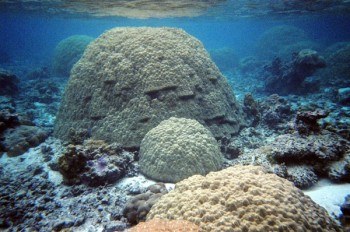
According to Quinn, the key is a better understanding of uncertainties. “People say, ‘How do we know what’s going to happen?’” said Quinn. “We don’t for sure, but we can think in terms of probable outcomes. It’s analogous with risk assessment and insurance. When I lived in coastal Florida, I had hurricane insurance. Now I live in Austin, I don’t have hurricane insurance. It’s still possible we’ll get hit by a hurricane, but not very likely. We want to use the past behavior of the Earth to lower the error bars.”
As the uncertainties diminish, Quinn said, policy makers may feel confident enough to start doing something about climate change.
Coral Hunting
Quinn joined the University of Texas at Austin’s Jackson School of Geosciences this past summer, assuming a dual appointment as a professor in the school’s Department of Geological Sciences and as a senior research professor in the Institute for Geophysics (UTIG).
Before coming to the Jackson School, Quinn directed the Global Change Research Center at the University of South Florida. He’s had a connection to the Institute for more than a decade through his collaboration with Fred Taylor, a senior research scientist at UTIG. “Fred is the guy I always go to when I want to know where to find corals that cover a time period and a climate problem I’m interested in.”
ies and temperatures of the ocean’s surface changed over time? And what about climate variability? Have the El Niño/Southern Oscillation events become more intense or long-lasting over time?
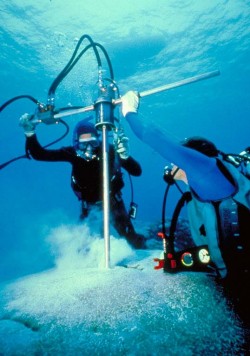
When he first began studying corals for clues about past climate about 15 years ago, Quinn went on large research ships with an array of other researchers working in different fields, state of the art equipment and technical support. In the early days, he made several field trips with the Ocean Drilling Program. But over the years, he’s gotten more nimble. Now, when he goes out in the field, it’s often with just two or three other researchers on a small boat. He usually just rents the boat and her captain locally for a few weeks.
The researchers spend entire days in wet suits, drilling into underwater corals, often eight or ten meters down. “We go to remote places,” usually on or near tropical islands, he said. “So we need simple and robust tools. There are no Home Depots in places like the Solomon Islands or New Guinea.”
Quinn uses a hydraulic coring device designed by Fred Taylor. It runs on power from the boat delivered through an umbilical cord. “Most of the people who drill modern corals use the UT drill. It’s evolved and improved over the years of course,” Quinn said.
They bring back solid cylinders of limestone three and a half inches, or nine centimeters, wide. Some cores shipped back to the lab might be as long as ten feet, or three meters. Following each field trip, it takes years of lab work and analysis to interpret what the cores are saying about past climate.
“People often say to me, ‘You must have grown up loving scuba diving and corals’,” said Quinn. “No, I didn’t. I’m using corals because I’m interested in specific climate questions over specific time intervals. I try to figure out what is an important scientific question that my expertise could make an impact on and then ask, okay, now what archive should I use?” For the questions he’s asking about climate change, the archive happens to be coral.
Quinn studies other repositories of climate information, including foraminifera—single-celled marine organisms with carbonate shells—in sediments in the Gulf of Mexico.
Quinn is sometimes asked about the damage that drilling can do to corals, which are in decline in much of the world. He said, “We fill the holes in with marine cement. The living animals around it will grow over it. Like a scab, it heals itself. You go back three years later and you can’t tell where you drilled.”
Cutting Up
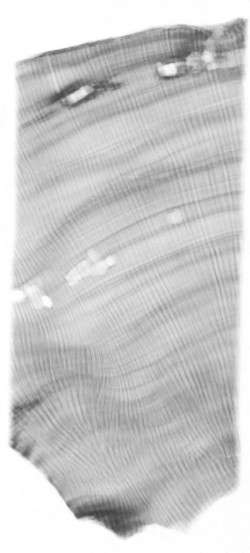
Back in the lab, a coral core is cut in half down the middle. A thin slab is cut off of one of the halves. Then the slab goes to the dentist. It gets x-rayed to reveal light and dark density bands. Darker, denser bands indicate periods of slow growth. Lighter bands indicate faster growth.
Next, the slab is secured on a bench and a computer-guided dental drill runs along its length, grinding a small trench in it. This produces a fine powder which is sampled 12 times for each year of the core (as determined by the location of the bands). Thousands of tiny vials are loaded up with the powder. Then each sample is analyzed to determine the oxygen and carbon isotopic ratios of the sample. A subset of the sample is then analyzed for the elemental ratio of strontium to calcium. After many careful calculations, a month-by-month history of sea surface temperature and salinity is produced, often spanning centuries.
Quinn is especially proud of research he and his colleagues published in the journal Paleoceanography in August 1998. His collaborators included Fred Taylor (UTIG); Thomas Crowley (Texas A&M University); Pascal Joannot (Aquarium de Noumea); and Christian Henin and Yvon Join (Institut Français de Recherche Scientifique pour le Développement en Coopération).
They reconstructed a history of ocean conditions at New Caledonia—a French island east of Australia—back to the year 1657. French scientists have collected daily measurements of sea surface temperatures and salinities at that same spot continuously since 1967. That allowed Quinn and his team to precisely match part of his record to actual observations to verify and calibrate his results.
The record showed seasonal cycles and El Nino/Southern Oscillation (ENSO) cycles that were familiar. But it also revealed longer, previously unknown cycles that unfolded over 16, 32 and 60 years.
“We still don’t know the causes of these decadal changes,” Quinn said. He and a student are looking at other corals at nearby sites to paint an even more detailed picture of what happened.
Much of Quinn’s work focuses on the tropics. That’s because the temperatures in the tropical oceans play an important role in the climate of the entire planet. “If the tropics are warm, you get convection and monsoons,” Quinn said. “But if you cool the tropics, you get droughts.”
Corals attest to this connection. For example, the monsoons in India failed in 1877 and 1878. “We see records of that in coral in the Indian Ocean. In 1982 and 1983, there was a big ENSO event. Coral records reflect that event too,” said Quinn.
In the fall of 2005, Quinn was part of a team that drilled cores in reefs off the shore of Tahiti to look at the history of tropical sea level and surface temperatures from 25,000 to 10,000 years ago—a time that covers Earth’s last major glaciation. The team is still evaluating the samples.
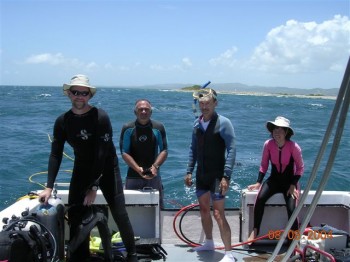
The Tahiti work was part of the Integrated Ocean Drilling Program (IODP). The IODP is an international effort that grew out of two earlier projects: the Ocean Drilling Program and the Deep Sea Drilling Project. Scientists from around the world submit proposals to use one of several ocean research vessels with deep sea drilling capabilities to explore the history and structure of Earth as recorded in seafloor sediments and rocks. Quinn is just finishing a three year term on the Science Planning Committee for the IODP, ranking and recommending which proposals will be drilled.
Quinn says the opportunities in his new professional home at the recently formed Jackson School of Geosciences will be groundbreaking: “It’s as if you had the chance to buy Microsoft stock back when it was just getting started. I’m not talking about monetary expansion—although there is certainly money. It’s the intellectual expansion that will be staggering.”
by Marc Airhart
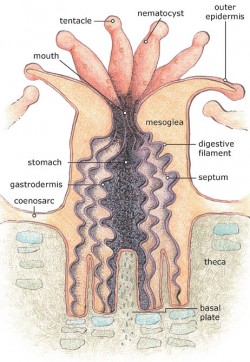
Sidebar: How do corals record past climate and ocean conditions?
A colony of stony coral is made up of thousands of colorful little animals called polyps. Each polyp, which is a clone of all the others, builds a hard cup-shaped scaffold of calcium carbonate. It absorbs the calcium it needs from the surrounding seawater.
“It starts as a one story house,” said Terry Quinn, a research scientist at the University of Texas at Austin’s Jackson School of Geosciences. “The polyp lives in it for a year, vacates it and then starts building a second story on top.” Slowly, layer by layer, a hard “coral head” forms beneath. All the living coral is on the outer surface.
As the seasons change, sea temperatures rise and fall, as does the amount of sunlight filtering through the water. The layers of a coral head laid down in winter have a different density than those formed in summer. Over time, a coral head develops growth bands similar to those in the trunk of a tree. These appear as light and dark bands in x-ray images.
One colony of coral can grow for several hundred years. By carefully combining records from several coral colonies, Quinn and others reconstruct ocean conditions at time scales ranging from seasons to multiple centuries. These “climate windows” provide valuable information on how the tropical climate system operated in the most recent past, but also in the geologic past. That’s especially useful information for scientists who build computer models to forecast future climate.
